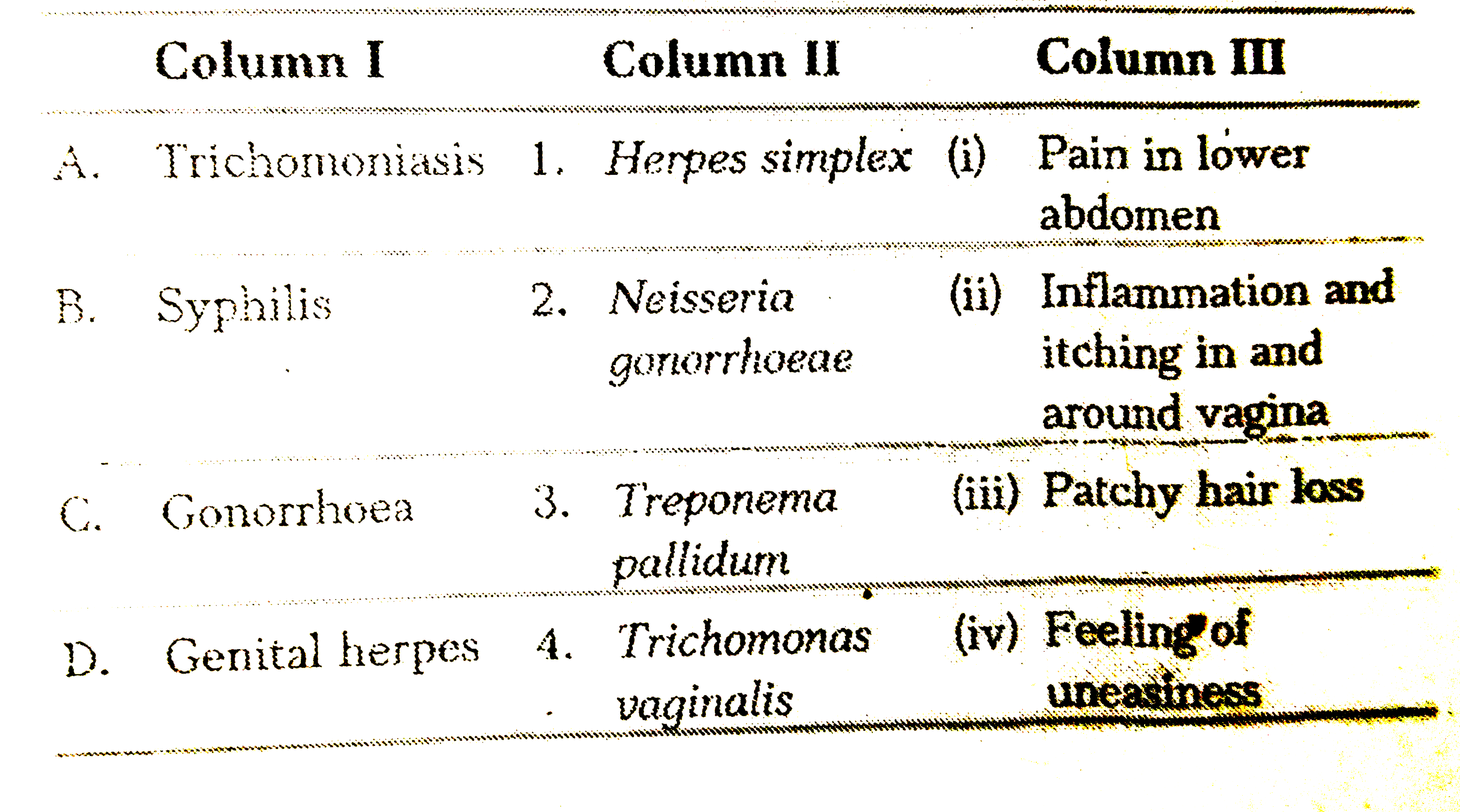Match the following
AnimalsLocomotory OraganA.Octopus(i)LimbsB.Crocodile(ii)Comb platesC.Catta(iii)TentaclesD.Ctenoplana(iii)Fins
A. → (iii) B. → (i) C. → (iv) D. → (ii)
(a) Octous tentacles are the appendages in invertebrates that are used for grasping food and for locomotion.
(b) Crocodile Limbs are used for locomotion, and swimming.
(c ) Catta Fins are means of locomotion, and are used to generate optimum thrust thus controlling the subsequent motion.
(d) Ctenopalna Comb plates are locomotory organs formed by strong cilia with fused bases.
Topper's Solved these Questions
- BOOK - NCERT EXEMPLARCHAPTER - ANIMAL KINGDOMEXERCISE - SHORT ANSWER TYPE QUESTIONS13videos
ANIMAL KINGDOM
- BOOK - NCERT EXEMPLARCHAPTER - ANIMAL KINGDOMEXERCISE - LONG ANSWER TYPE QUESTIONS4videos
ANIMAL KINGDOM
- BOOK - NCERT EXEMPLARCHAPTER - ANIMAL KINGDOMEXERCISE - LONG ANSWER TYPE QUESTIONS4videos
ANIMAL KINGDOM
- BOOK - NCERT EXEMPLARCHAPTER - ANATOMY OF FLOWERING PLANTSEXERCISE - Long Answer6videos
ANATOMY OF FLOWERING PLANTS
- BOOK - NCERT EXEMPLARCHAPTER - BIOLOGICAL CLASSIFICATIONEXERCISE - Long answer5videos
BIOLOGICAL CLASSIFICATION
Similar Questions
Knowledge Check
- Question 1 - Select One
Match the following Columns
Column IColumn IIA.Collateral and open(i)Cucubita stemB.Radial(ii)FernC.Bicollateral(iii)Maize rootD.Concentric(iv)Sunflower(v)Maize stemAABCD(v)(iv)(iii)(i)BABCD(iv)(iii)(i)(ii)CABCD(iv)(i)(iii)(ii)DABCD(iv)(iii)(ii)(i) - Question 2 - Select One
Match column I with column II and select the correct option from the given codes.
Column IColumn IIA.Ammocoete(i)Sea horseB.Crocodiles(ii)PenguinC.Fish(iii)LampreyD.Mammal(iv)BatAA-(iii),B-(iv),C-(i),D-(ii),E-(v)BA-(i),B-(iv),C-(v),D-(ii),E-(iii)CA-(v),B-(iii),C-(ii),D-(iv),E-(i)DA-(iv),B-(ii),C-(i),D-(iii),E-(v) - Question 3 - Select One
Match the following
Column-IColumn-IIa.Kashmiri goats(i)Superior carpet woolb.Tibetian antelope(ii)Pashminac.Rabbit(iii)Shahtooshd.Sheep (Nail)(iv)AngooraAa(ii), b(iv), c(iii), d(i)Ba(ii), b(iii), c(iv), d(i)Ca(iii), b(ii), c(iv), d(i)Da(iii), b(iv), c(ii), d(i)
Match the terms in column I with those in column II:
Column IColumn II(i)Trypsin(a)Liver(ii)Amylase(b)Gastric glands(iii)Bile(c)Pancreas(iv)Pepsin(d)SalivaView SolutionMatch the following columns
Column-IColumn-IIa.Binomial nomenclature(i)Carolus Linnaeusb.Generic name(ii)Muscidaec.Family(iii)Pantherad.Systema naturaeView SolutionMatch the following and select the correct option
Column-IColumn-IIA.Pteris(i)GymnospermB.Cycas(ii)BryophyteC.Sphagnum(iii)AlgaeD.Sargassum(iv)PteridophytaView SolutionMatch the following columns:
Column IColumn IIa.Oxylophytes(i)Calcium-rich soilsb.Eremophytes(ii)Waste landc.Chrysophytes(iii)Deserts, steppesd.Calciphytes(iv)Acidic soilsView SolutionMatch the following columns
Column IColumn IIa.Lysozyme(i)HClb.Peptic cells(ii)Antibacterial enzymec.Saliva(iii)Sublingual glandd.Oxyntic cells(iv)PepsinogenView Solution


